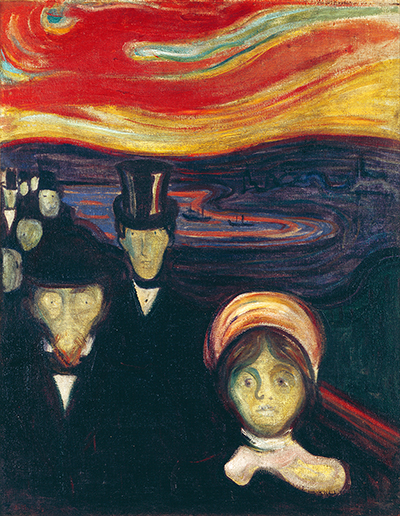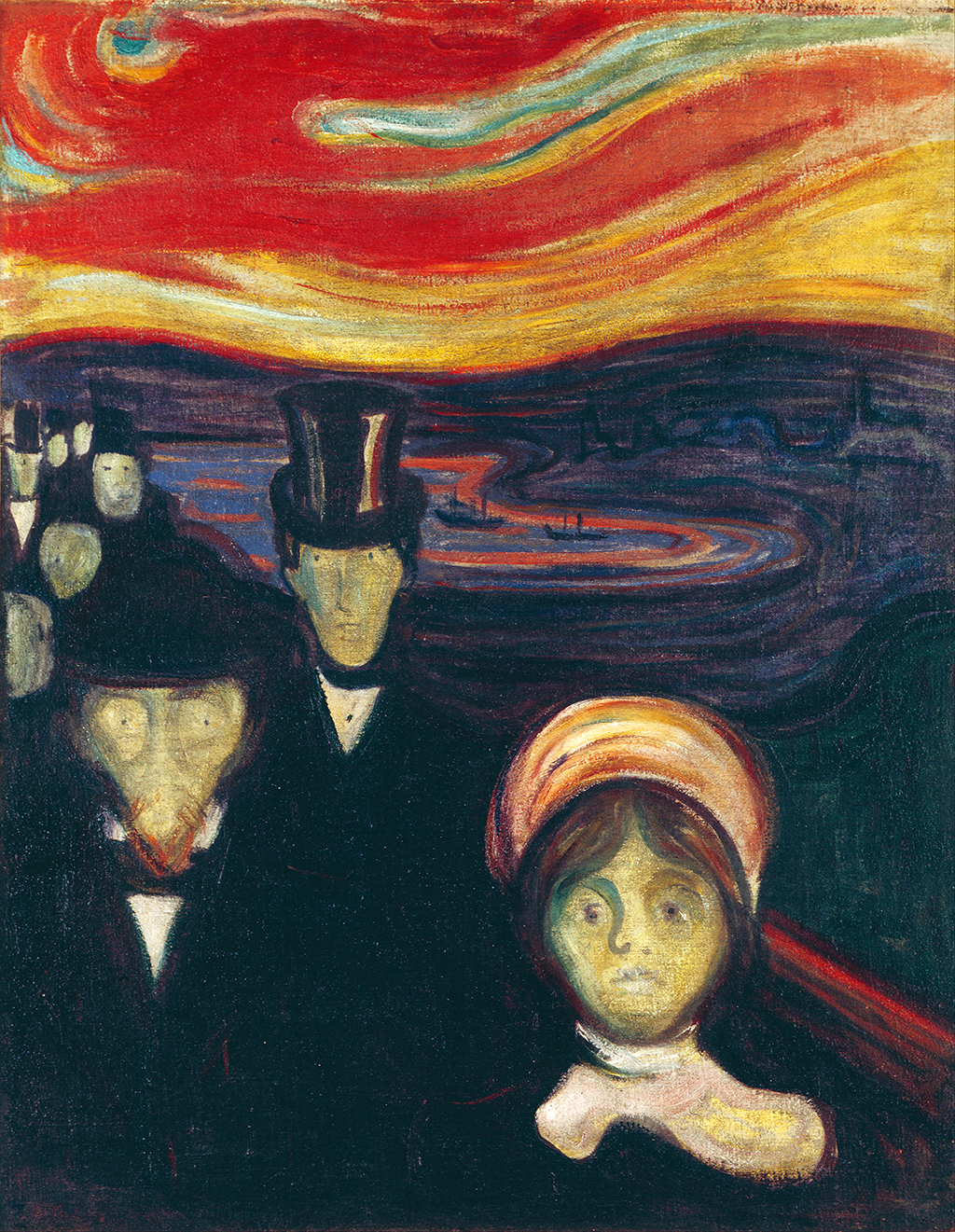Edvard Munch's Anxiety draws on influences from two previous works, displaying elemental forces that had already been in The Scream.
The painting was certainly a reflection of Munch's mental state at the time. We can see the same jetty that has the same people on it, being displayed as aliens. The lake, the boats, the church and other structures all appear in a similar way as they do in The Scream painting. It is suggested that The Scream is a reflection of the horror that Munch experienced in isolation, however in this work the anxiety remains present but the feelings are shared by the group. Two years after Much completed the work he returned to it in order to add a motif that had previously been seen in his print mediums. This was used to heighten the emotional forces that are present in the painting.
This, combines with Munch's methods to translate the painting into prints reflects the mental state of Munch and his creative reaction to such activities. The painting depicts the mental state of an anxious, clever artist and the alienation that can be felt in a group of people surrounding him. The artist certainly found hope and therapy in his paintings during his illness. Edvard Munch was a painter as well as a printmaker from Norway who lived between 1863 and 1944. He is particularly famous for the evocative psychological themes that dominate much of his work.
Munch influenced German Expressionism in the early 1900's. Munch's famous work is The Scream which he finished in 1893. Munch studied engineering and lived in several european cities, including Paris, Berlin and Kristania. Berlin became a city that particularly influenced his art. Munch suffered from anxiety himself, which was said to verge on madness. He had feelings of persecution and hallucinations and he underwent treatment with electroconvulsive therapy that is said to have helped stabilise his personality. He returned to Oslo in 1909 and spent much of the last twenty years of his life in solitude.





